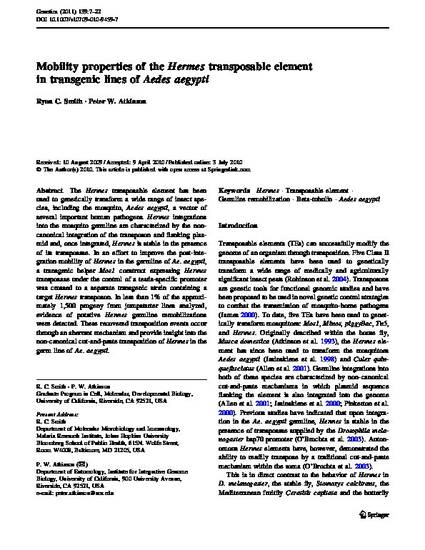
Article
Mobility properties of the Hermes transposable element in transgenic lines of Aedes aegypti
Genetica
(2011)
Abstract
The Hermes transposable element has been used to genetically transform a wide range of insect species, including the mosquito, Aedes aegypti, a vector of several important human pathogens. Hermes integrations into the mosquito germline are characterized by the non-canonical integration of the transposon and flanking plasmid and, once integrated, Hermes is stable in the presence of its transposase. In an effort to improve the post-integration mobility of Hermes in the germline of Ae. aegypti, a transgenic helper Mos1 construct expressing Hermestransposase under the control of a testis-specific promoter was crossed to a separate transgenic strain containing a target Hermes transposon. In less than 1% of the approximately 1,500 progeny from jumpstarter lines analyzed, evidence of putative Hermes germline remobilizations were detected. These recovered transposition events occur through an aberrant mechanism and provide insight into the non-canonical cut-and-paste transposition of Hermesin the germ line of Ae. aegypti.
Keywords
- Hermes,
- transposable element,
- germline remobilization,
- beta-tubulin,
- Aedea aeqypti
Disciplines
Publication Date
2011
DOI
10.1007/s10709-010-9459-7
Publisher Statement
Copyright 2010 The Authors
Citation Information
Ryan C. Smith and Peter W. Atkinson. "Mobility properties of the Hermes transposable element in transgenic lines of Aedes aegypti" Genetica Vol. 139 Iss. 1 (2011) p. 7 - 22 Available at: http://works.bepress.com/ryan_smith1/17/
Creative Commons license

This work is licensed under a Creative Commons CC_BY-NC International License.
